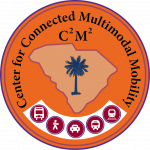Attribution theory refers to the psychological phenomenon where one person tries to perceive others’ cognitive behavior by ascribing their own emotions, opinions, and desires. For instance, while passing at an intersection, a driver expects that the maneuver of other drivers coming from the opposite direction or conflicting movements would be like their own. When expected behaviors do not match the opposite or conflicting movement driver’s future behaviors, a collision is likely to occur. This research investigated the application of attribution theory to assume the opposing drivers’ cognitive behavior and performance at a highway intersection. This phenomenon was evaluated by utilizing the second Strategic Highway Research Program (SHRP-2) and National Highway Traffic Safety Administration (NHTSA) data sources. From the data analysis, it was observed that drivers aged 25-34 years were involved in the highest number of fatal accidents from 2009-2018 in the USA. Besides, it was found that younger drivers (aged 20-years old or less) contributed fewer fatal collisions (44,404 crashes) than elderly drivers (aged 65-years old or more, 62,572 crashes). The impact of the attribution theory and driver age in highway intersection-related collisions were examined from simulation models. From simulations, it was observed that there was a high possibility of collisions when an elderly driver was turning left. In this research, the combination of an elderly driver turning left, and the younger driver going straight resulted in the highest number of collisions compared to other groups. The key findings confirm elderly and younger drivers have different driving behavior that could be ascribed to their attribution. These results can assist transportation agencies to develop training and design strategies to better accommodate elderly drivers due to their declined physical and cognitive abilities and improve drivers’ education programs for younger drivers.
Attribution Theory and Collisions at Intersections Final Report
Attribution-Theory-and-Collisions-at-Intersections-Final-Report
